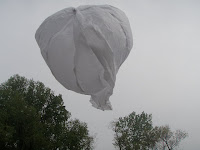 |
| photo by Bernadette Colletti |
How could Lighting a Spark not speak to all of us in education. It is our goal to create the spark in the minds and eyes of our students, which in turn will enroll us deeper into the process, and creating a cycle of success. We attempt this by Being the Board on which our lessons are played out on, being rigid but also flexible based on the needs of our students.
The deepest challenge is sustaining this throughout the school year, day after day. Face it, we all have off days, but we need to minimize those, or at least the effect those have on the kids. Finally, if we look at our students and the gifts they bring to the classroom, Telling the WE Story will engage both the children and us so we achieve the most success possible. It is what the Art of Possibility is all about.
 |
| photo by Bernadette Colletti |

First of all let me just say I love the way your blog is set up. It is so neat and organized. Lighting a spark is definitely what I do everyday. Off days always seem to be the day when I get observed- haha
ReplyDeleteI like the part about being rigid but yet flexible. This is such a huge part about being a teacher and I like how you put it into words in your post. I think this is something that is very hard to explain or train. This trait along with lighting a spark in the kids is what builds the rapport with the students that allow you to truly impact them for the future.
ReplyDeleteMike: I absolutely agree with your comment that the most challenging part of lighting a spark in the student is maintaining it throughout the year. I remember during my student teaching days that my coordinating teacher told me that our job as teachers was to leave our lives inside the car when we got out to go into school for the day. If we can be there for the kids who bring so much of their own lives to school, they see that we are there for them and the return on that investment is always incredible. Leaving my life at the car is very difficult to do, but it is a sacrifice that I am willing to take for my students. Thanks for the post and the bringing up of such a valuable memory.
ReplyDeleteMike-
ReplyDeleteI agree with your comments on sustenance. Five days a week, 5 hours a day is really laborious. To really be "on" day after day. What a challenge! It reminds me of one of Malcolm Gladwell's theories for his book Blink. He supposes that it takes about 10,000 hours to get really, really great at something - be it painting, playing viola, or even teaching. I guess all that focused time spent lighting the spark will eventually turn us into "experts". But that isn't why we do it is it? Dedicated teachers know the vision is all about the children.
That is one of the reasons why I picked this book: because it is so easy to go from the eager young teacher to the cynical jaded veteran teacher just because of the day to day grind of working against the tide with students, administrators, parents and coworkers all saying "no," and "why try?" We need the occasional reminder of what it was that inspired us to become educators.
ReplyDelete